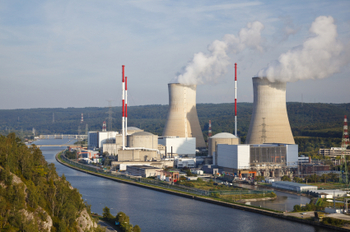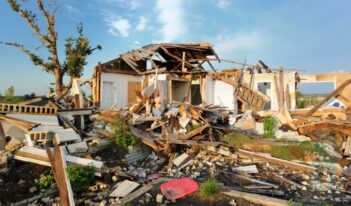
Nuclear Regulatory Commission unlikely to follow the GAO’s recommendation.
Is the Nuclear Regulatory Commission (NRC) accurately estimating how people will react to a nuclear power plant disaster? Possibly not, according to a report recently released by the Government Accountability Office (GAO).
In the wake of the March 2011 Fukushima Daiichi nuclear power plant disaster, Senators Barbara Boxer (D-CA), Sheldon Whitehouse (D-RI), Robert P. Casey, Jr. (D-PA), and Bernard Sanders (I-VT) asked the GAO to review nuclear power plant emergency preparedness in the United States. As part of its report, the GAO examined the emergency preparedness responsibilities of the NRC, the Federal Emergency Management Agency (FEMA), local and state authorities, and nuclear power plant operators. The GAO recommended that the NRC take several steps to gather more information about how evacuations will proceed in the event of a nuclear emergency.
The NRC and FEMA work together to monitor and ensure emergency preparedness at commercial nuclear power plants. For example, nuclear power plants cannot obtain an operating license unless the NRC is assured that public health and safety are adequately protected. As part of the licensing process, the NRC requires nuclear power plant operators to develop studies to estimate how much time it will take to evacuate the 10-mile area surrounding their plant if an incident occurs. This geographic area is called an “emergency planning zone.”
In the event of a nuclear power plant incident, local and state officials will give instructions (either to evacuate or to remain in place) to people living nearby. The authorities generally will not ask people who live outside the emergency planning zone to take protective action since the NRC and FEMA claim that areas outside that area normally will not be exposed to life-threatening radiation doses.
In a 2011 guidance, the NRC instructed nuclear power plant operators to adjust their evacuation time estimates to account for “shadow evacuations”— evacuations of people outside of an officially declared evacuation area who leave without instructions to do so. In particular, the NRC asked plant operators to assume that 20% of the permanent residents in areas outside the evacuation zone (and within 15 miles from the nuclear power plant) would evacuate even when told it was unnecessary. The reason for this adjustment, the NRC explained, is that the “shadow population” could delay people who are under an evacuation order.
The NRC’s estimate of a 20% “shadow population” was based on its 2008 study of residents of the country’s 63 emergency planning zones. The GAO report indicates that the NRC may be underestimating the reaction of people living outside these zones. While NRC regulations require nuclear power plants to provide emergency preparedness information to residents of emergency planning zones, plant operators do not need to provide this information to people who live outside these areas. This difference led the GAO to conclude that people living outside emergency planning zones might not know as much about the appropriate way to react in an emergency and may be more likely to evacuate needlessly.
The GAO’s concern is that if the NRC’s estimate is wrong, and if more than 20% of the people living outside of the evacuation zone leave, it will take longer for people to leave the evacuation zone than nuclear power plant operators’ current estimates indicate. This delay could potentially risk the health and safety of those trying to flee the emergency planning zone.
To make nuclear power plant emergency preparedness more informed, the GAO report recommended that the NRC take several steps: gather information on public awareness of nuclear power plant emergency preparedness in communities outside of the 10-mile emergency planning zone; figure out this population’s likely response to an incident; and, if appropriate, adjust estimates of evacuations outside the mandatory evacuation zone.
Senator Barbara Boxer has urged the NRC to adopt the GAO’s suggestions, calling them “common sense” recommendations “after the nuclear disaster in Fukushima.” The NRC, however, has indicated that it is unlikely to follow the GAO’s recommendations.
Although the NRC referred to the GAO’s description of the nuclear power plant emergency preparedness programs as “complete,” the agency claimed that the GAO report did not acknowledge the basis for the NRC’s “shadow population” estimate. Specifically the NRC noted that the GAO did not examine the “considerable research” the NRC has conducted on evacuations during natural disasters. This research, according to the NRC, shows that shadow evacuations generally do not have a significant impact on traffic movement.
In its response, the GAO argued that the NRC’s research generally consisted of studies of evacuations from non-nuclear incidents—like “hurricanes, wildfires, and chemical spills”—which might not cause the same public response as a nuclear disaster. The GAO also highlighted what it considers to be an inconsistency in the NRC’s statements. Although the NRC now says that shadow evacuations do not have a significant impact on traffic movement, in its 2011 guidance the NRC said that shadow evacuations should be considered “because the additional traffic generated has the potential to impede an evacuation . . . .”
The four senators who commissioned the GAO report have expressed concern about the NRC’s apparent reluctance to follow the GAO’s advice.



